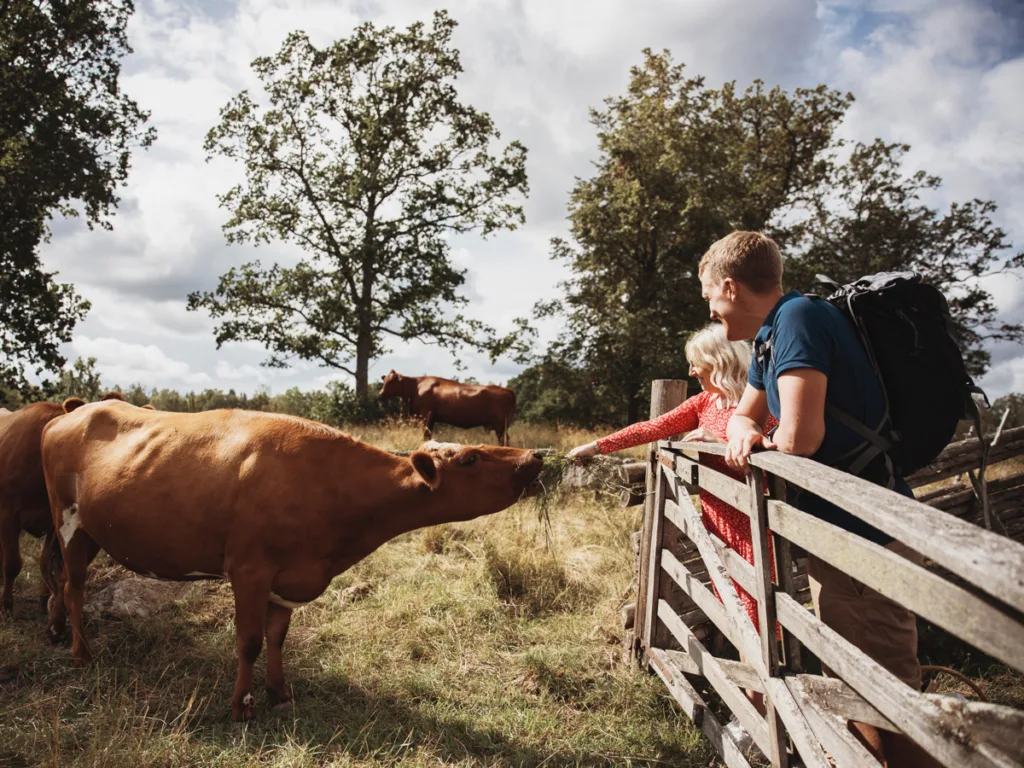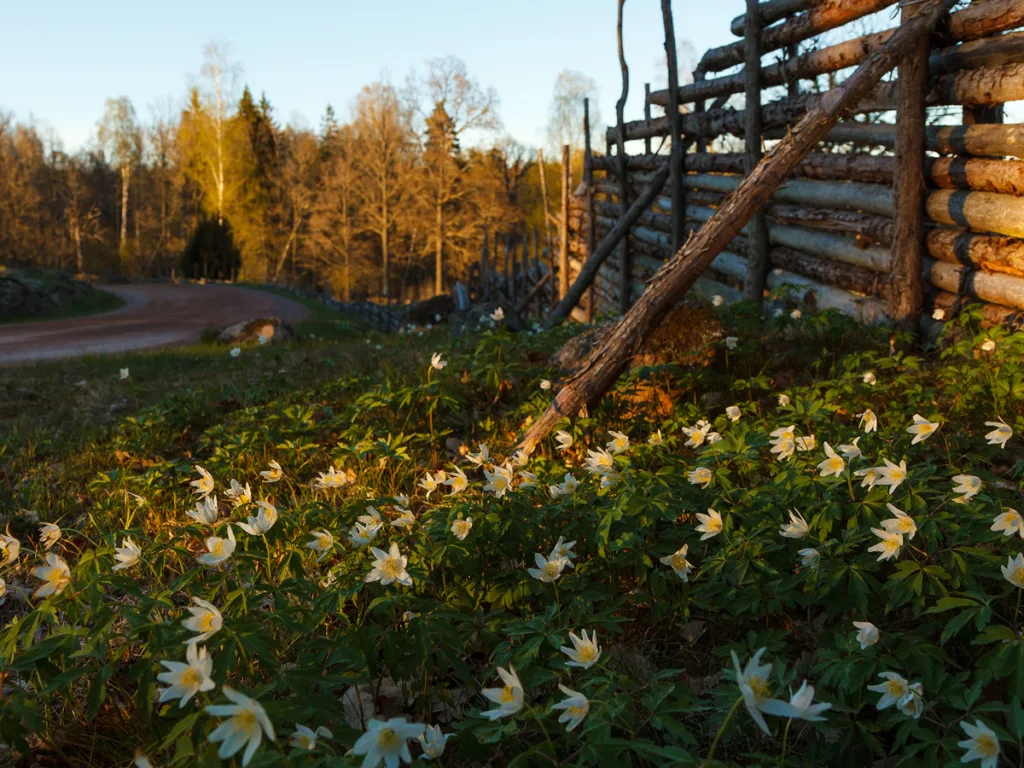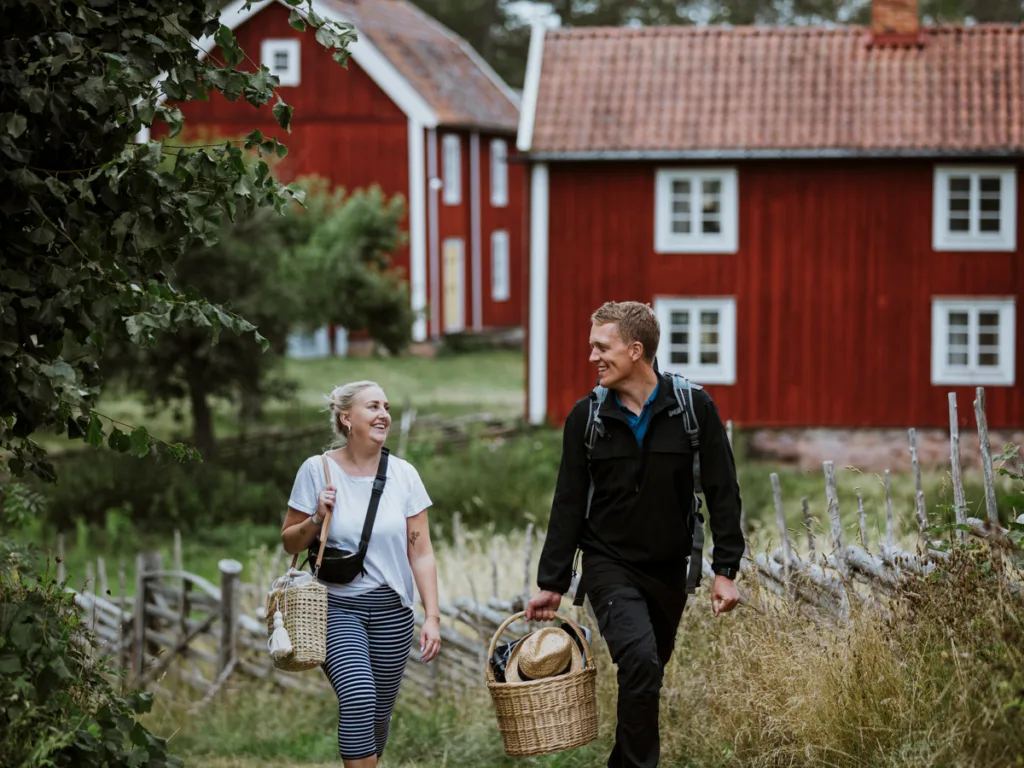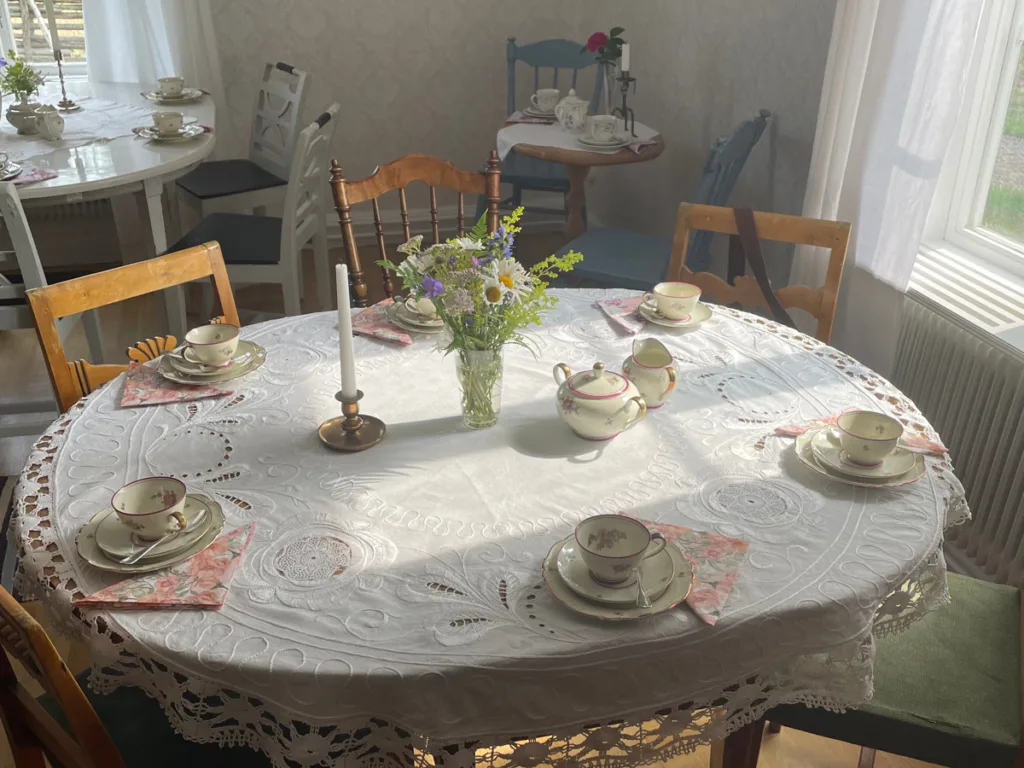With its winding gravel roads and miles-long traditional fences, the cultural reserve of Stensjö by offers an experience of bygone times in Småland.
RED HOUSES. The cultural reserve of Stensjö by, a picturesque village that resembles many others in Småland around 1900, offers a charming glimpse into Sweden’s past. The surroundings are familiar to many people because several scenes from Astrid Lindgren’s movies about Barnen i Bullerbyn and Emil i Lönneberga were filmed here. In the village, five people work full-time with gardening, landscaping, forestry, animal husbandry, café business, and food processing. Stensjö by also serves as a knowledge and development center for historical farming and self-sufficiency. There are several beautiful hiking trails on the village’s land that wind through lush forests and vast meadows. Here, visitors can let their minds wander freely while the calmness of nature embraces them.



At charming Tilia’s café, which exudes the atmosphere of the early 1900s, visitors can indulge in delights made from scratch using locally sourced and organic ingredients, often from the village’s own historical gardens and cultivation. Throughout the year, there are also plenty of events and activities to participate in around the village, says café manager Linn Engelholm. “Including a folk music and dance evening in the summer and an academic day in September with the theme ‘Småland childhood 100 years ago.’ In addition, we offer courses in cultural heritage preservation, such as traditional fence building, scything, seed cultivation, and linen processing,” she explains. Visitors should also take the opportunity to meet the farm’s red poll cattle and Helsinge sheep, both traditional Swedish breeds that graze on the natural pastures year-round. The animals, gardens, buildings, cultural landscapes, and dedicated employees together make Stensjö by a living museum with a strong emphasis on traditions, craftsmanship, and biodiversity, well worth a visit.


Read more at stensjoby.se.
